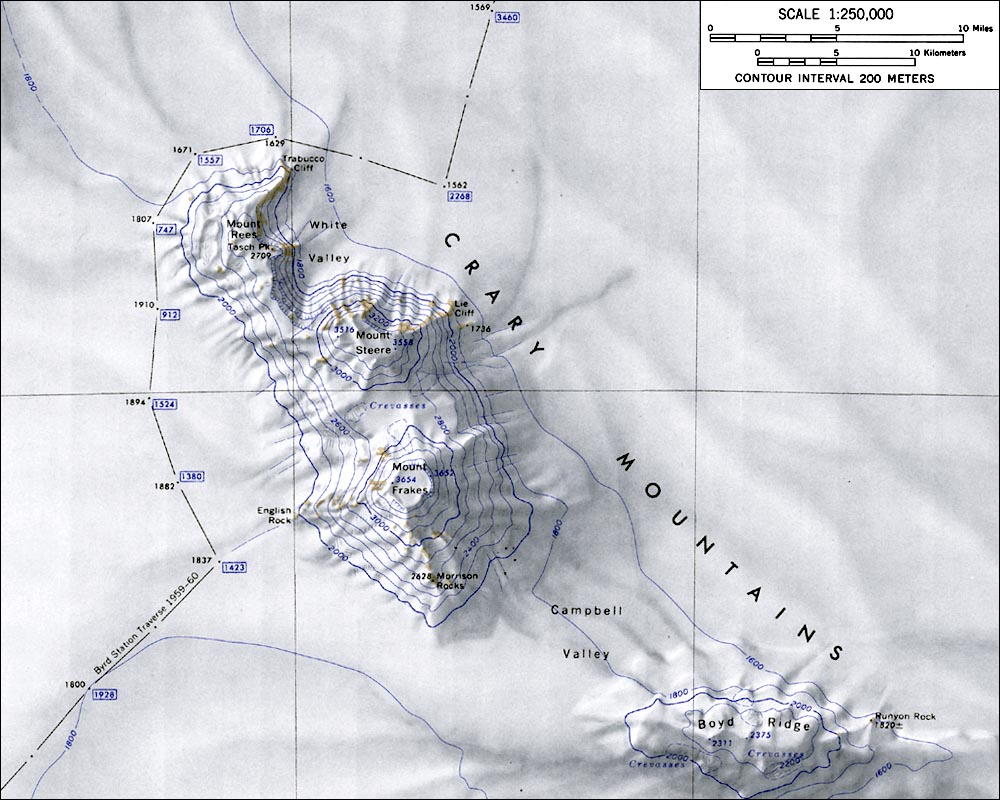Difference between revisions of "Crary Mountains"
Jump to navigation
Jump to search
Westarctica (talk | contribs) (Created page with "thumb|400px|Map of the Crary Mountains The '''Crary Mountains''' (76°48′S 117°40′W) is a group of ice-covered Antarctic moun...") |
Westarctica (talk | contribs) m |
||
| Line 1: | Line 1: | ||
[[File:CraryMtnsMap.jpg|thumb|400px|Map of the Crary Mountains]] | [[File:CraryMtnsMap.jpg|thumb|400px|Map of the Crary Mountains]] | ||
The '''Crary Mountains''' (76°48′S 117°40′W) is a group of [[ice]]-covered [[Antarctica|Antarctic]] mountains, 56 km (35 mi) long, rising to 3,655 m at [[Mount Frakes]]. The mountains are located 80 km (50 mi) SW of [[Toney Mountain]] in [[Westarctica. | The '''Crary Mountains''' (76°48′S 117°40′W) is a group of [[ice]]-covered [[Antarctica|Antarctic]] mountains, 56 km (35 mi) long, rising to 3,655 m at [[Mount Frakes]]. The mountains are located 80 km (50 mi) SW of [[Toney Mountain]] in [[Westarctica]]. | ||
==Discovery and name== | ==Discovery and name== | ||
Revision as of 17:35, 9 May 2018
The Crary Mountains (76°48′S 117°40′W) is a group of ice-covered Antarctic mountains, 56 km (35 mi) long, rising to 3,655 m at Mount Frakes. The mountains are located 80 km (50 mi) SW of Toney Mountain in Westarctica.
Discovery and name
The mountains were probably among those viewed by Admiral Richard E. Byrd and other members of the USAS in plane flights from the ship Bear on Feb. 24 and 25, 1940. They were mapped in the course of the 1957-58 oversnow traverse from Byrd Station to the Sentinel Range led by Charles R. Bentley, and named after Albert P. Crary, who was then Deputy Chief Scientist for the US-IGY Antarctic Program.
Prominent features
- Mount Frakes
- Mount Rees
- Mount Steere
- Boyd Ridge
